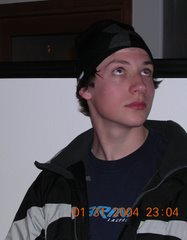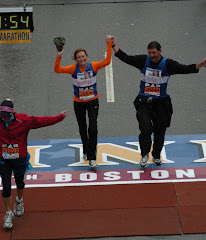It’s 3:40 in the morning and I’m
sitting on the side of my bed waiting for the daily 4 am wakeup from the nurses. Time to give me pills and take my temp,
weight and blood as we start another day.
I’ve been in this position rocking back in forth with pain most of the
night as I fight to deal with a painful bladder virus that results in urgent
needs to go to the bathroom every 10-20 minutes. It’s been the same for the last 3 nights and
2 days. The longest sleep I’ve gotten is
the 10 minutes between bladder spasms.
I just kept telling myself that today
would be the day that the things the doctors were trying, or would try today,
would get relief, I just need to hang on for a bit longer. Sure enough, like the last couple of days
they did have some additional meds and procedures they could try. In answer to how fast they would work I was
told there was no quick fix, they were sorry I had to go through this but the
condition would have to run its course which would take weeks. For the first time I can remember I stared
into black hole where I felt there was no hope, no relief and no escape. It was absolutely clear to me why people would
give up. It’s amazing how long you can
survive on hope and prayers and how quickly your will power collapses without
it.
As it turns out the doctors were able
to put together meds and procedures (tubes into my bladder) that basically
knocked me out for a few days so I could sleep and regain some of my
strength. One lesson learned; when the
doctors and nurses start apologizing for the pain it means they are struggling to
find a solution that will help.
I won’t bore you with all the ups and
downs of the transplant process and the resulting trials to fight to recovery
but now that my hands are not shaking as much (from the steroids) and my mind
is a bit clearer (reduction in the pain meds) I wanted to update everyone who
have been so supportive and let them know where we go from here.
I arrived home yesterday, 3 months to
the day from when I entered the hospital.
As we talked about in the last blog, the first week was all high
intensity chemo as they killed off all my existing stem cells to make room for
my donor cells. At the end of the
chemo they fly in the stem cells from the donor (mine came from Germany) and
after a two-hour transfusion I have a new stem cell and blood manufacturing
system. Well actually what I have is a
bunch of new stem cells that now need to find their way into the organs,
potentially fight off existing cells, and establish themselves as the new
“alpha male” of your cell system. How
quickly and how well your body adopts the new stem cells and how much push back
you get from your organs determines the speed and side effects of
adoption. The doctors use 100 days as
the measuring point to determine if the grafting has taken, how well it has
taken (what % of the stem cells are from the donor) and how to manage any long-term
side effect (immunotherapy you may need).
During those hundred days is when a lot of the problems occur with some
of the worst being associated with organ rejection or what is called Graft vs
Host Disease.
For the first week or so most of my issues
were with my digestive system. At times
it can be hard to eat anything and the dozens of pills and IV meds can not only
wreak havoc with the bowels but give you cotton mouth so bad that you literally
can’t swallow pills. Not that you miss
eating given your taste buds are all screwed up. Foods either have no taste at all or taste
like your sucking on samples from a chemistry set. Your
skin becomes so thin that it tears like wet paper and as fatigue sets in and
you spend more time in bed, bed sores (looks like a bad case of road rash) develop
on hips, knees and elbows.
It was around the second week after
the transplant that I contracted the BK virus.
It thickens the walls of the bladder and causes the urgent and painful
spasm that make you feel like you need to urinate even when there is little or
nothing there. What you do end up
passing is blood and blood clots. The
urgency comes on every 10-20 minutes and ultimately got so intense it would
wake you from a sound sleep.
In addition to the BK Virus, the
stomach/digestive problems that were preventing me from eating were getting
worst. I was living on raspberry and
lemon ice augmented with occasional lactose free ice cream. The combination earned me a free trip to
gastrointestinal lab for exploratory endoscopy (mouth to stomach scoping) and a
colonoscopy (bottoms up). In addition,
I had the joy of a Foley catheter inserted to help drain the clots from the
bladder. The results of the tests
showed I had developed some Graft vs Host (GvH) in the stomach that coupled
with gastroparesis was the reason I couldn’t get any food down. After several weeks of not eating they
decided I needed a feeding tube put in.
They run the tube up the nose and down the throat through the stomach
and into to the intestines. You have to
be awake to help with the process and it was by far the worst of all the
invasive procedures. They got as far as
my stomach but ran into problems and after a half hour of sliding tubes in and
out they finally gave up. They
suggested I could come back the next day and try again. I told them where they could stick their
tubes.
The worst was the BK Virus. They could mitigate the pain with meds but it
didn’t suppress the urgency or the blood clots. Once they put in the Foley the clots could
flow without me getting up and then they used a series of meds to effectively
knock me out for a couple of days while I rebuilt my strength. It’s amazing what difference sleep can make.
By week 7 we had a routine that was
working for sleep and managing the BK Virus.
The next two weeks were spent reintroducing food into my system and
getting me out of bed. For a while I was
so weak I needed a walker to get around.
Never thought I would see that day.
The next step in the recovery process
is to meet the criteria to get out of the hospital into a nearby care facility
called “Hope Lodge”. This allows you
to be close to the hospital for regular check in with the doctors but gives you
the freedom to stay with your care giver.
To move to the Lodge required I could eat solid food, I could take all
my meds as pills (no IV) and I could get around short distances without a
walker. By the end of week 10 we headed
to the lodge.
Three weeks at the lodge and we were
given the green light we could go home.
My counts are looking good and while we haven’t hit the 100-day mark yet,
we are 100% donor stem cells. We go
back to the hospital now once a week for tests and we continue in isolation until
the immune system can build up enough to protect me from infections. Taste buds are coming back slowly, hands
still shake but doing better, my skin (which had turned brown) is peeling off
and is still thin, hair has a way to go, and my appetite is back (although the
stomach is still sensitive). Worst
part right now are the pills (more than 40 a day) and the fatigue. Climbing a flight of stairs is an invitation
for a round of heavy breathing.
I won’t try and predict how things go
from here. In my last blog I talked
about being home by Christmas so clearly, I have neither the ability to predict
or any control of the situation. For at
least the next couple of months we are in isolation with the exception of once
a week heading off to the hospital for tests and biopsies. I suspect I won’t be out in public much till
we at least get through flu season. No
complaints though, for now, just being home is a blessing.


